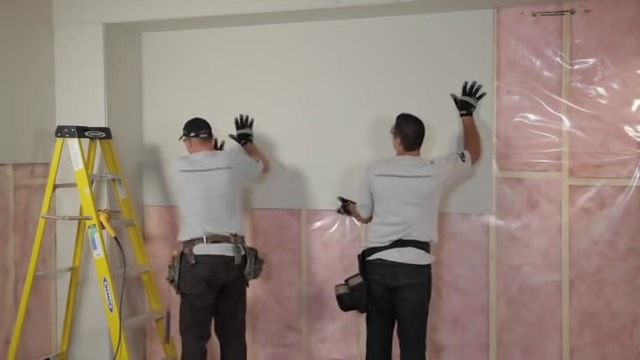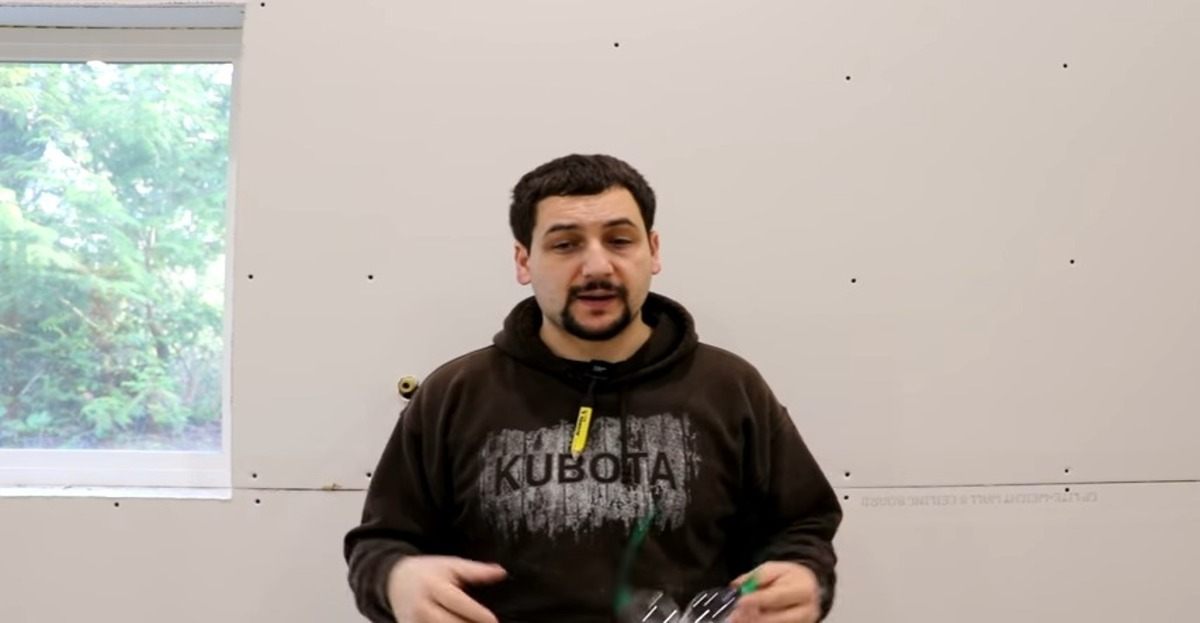Affiliate Disclosure: We may earn money or products from the companies mentioned in this post.
The garage is an essential part of any home, providing a space for cars, storage, and even a workshop. However, it can be a tough environment for drywall, with constant exposure to moisture, dirt, and other hazards.
If you’re looking to protect the bottom of your drywall in a garage, there are a few steps you can take to ensure it lasts as long as possible. We’ll explore some of the best ways to protect the bottom of the drywall in a garage, including tips for preventing moisture damage.
How To Protect The Bottom Of Drywall In A Garage?
Protecting the bottom of drywall in a garage is an important task for a homeowner, especially if the garage is attached to their living space. While the best way to protect the drywall is to install a moisture barrier between the garage and the living space, there is another way to protect the bottom of the drywall in your garage.
To protect the bottom of drywall in a garage, you can use a combination of different methods and materials.
- Before applying any protection, it’s important to clean the drywall surface to remove any dust, dirt, or debris.
- Applying a sealant or primer to the drywall can provide an extra barrier against moisture and water damage.
- Install a moisture barrier or plastic sheeting. This can be applied to the bottom of the drywall to prevent water from seeping through.
- Use waterproof paint or coatings. Applying a waterproof paint or coating to the drywall can provide an extra layer of protection against water and other liquids.
- Add baseboard or quarter-round trim. This can be applied to the bottom of the drywall to create a barrier against water and dirt.
- Properly maintain and clean the garage. It’s important to keep the garage clean and free of water or other liquids to prevent them from reaching the bottom of the drywall.
It’s important to note that regular maintenance and repair can not prevent all types of damages, it’s always a good idea to have the proper protection in place, such as moisture barriers or waterproof paint, to extend the lifespan of the drywall.
What Materials Are Suitable For Protecting Drywall In A Garage
Using the right materials is very important when protecting drywall in a garage. There are several materials that can be used to protect the bottom of drywall in a garage, including:
1. Sealants and primers
These products can be applied to drywall surfaces to provide a barrier against moisture and water damage. They can be used in conjunction with other protective materials to provide additional protection.
2. Moisture barriers or plastic sheeting
These materials are made of plastic, rubber, or other waterproof materials and can be installed using adhesive or mechanical fasteners.
3. Waterproof paint or coatings
These products can be oil- or water-based and can be used in conjunction with other protective materials.
They can be applied to the surface of the drywall to create a barrier against water and other liquids.
4. Baseboard or quarter-round trim
They can be made of wood, plastic, or other materials and are typically painted or stained to match the drywall.
What Are The Pros And Cons Of Protecting Drywall Bottom In A Garage?
Protecting the drywall bottom in a garage is an important consideration to make, as it can help protect the drywall from moisture and other elements. However, there are some pros and cons to consider when protecting the drywall bottom in a garage.
Here are the pros and cons to consider when protecting drywall
Prevent water damage: By applying sealants, primers, moisture barriers, or other waterproof materials, you can protect the drywall from water damage, which can be costly to repair.
- Protecting the drywall from water, dust, and other elements can increase the lifespan of the drywall, saving you money in the long run.
- By applying baseboard or quarter-round trim or ceramic tiles, you can improve the overall appearance of the garage and make it look more finished.
- By protecting the drywall, you can also protect other components of the garage such as electrical wiring, plumbing, and insulation.
- Some materials used for protecting drywall, such as ceramic tiles, can be expensive to purchase and install.
- Some materials, such as ceramic tiles, can be difficult to install and require professional help.
- Some materials, such as ceramic tiles, require regular cleaning and maintenance to maintain their appearance and effectiveness.
- Installing moisture barriers or plastic sheeting can make the garage look bulky and less finished.
How To Properly Maintain A Garage Drywall
Proper maintenance of drywall in your garage is essential for ensuring it remains in good condition. Here are a few tips to help you properly maintain your garage drywall and keep it in great shape.
1. Clean the walls regularly
Use a damp cloth or mild detergent to wipe down the walls and remove any dirt or grime. This will help prevent stains and discoloration of the drywall.
2. Keep an eye out for water damage
Check the walls regularly for any signs of water damage, such as water stains, mold, or mildew. If you notice any of these issues, address them as soon as possible to prevent further damage.
3. Repair any damage promptly
If you notice any holes, cracks, or other damage to the drywall, repair it as soon as possible. This will help prevent the damage from getting worse and potentially causing water damage.
4. Keep the garage dry
It is important to keep the garage dry and well-ventilated to prevent moisture from building up and causing damage to the drywall. Use a dehumidifier or install a ventilation system if needed.
5. Use appropriate cleaning products
Avoid using harsh chemicals or abrasive cleaning products on the drywall, as these can damage the surface and make it more susceptible to water damage. Use mild detergents or cleaning solutions specifically designed for drywall.
6. Check the sealant and paint
If you have applied sealant or paint to protect the drywall, check it regularly for any signs of wear or damage. If the sealant or paint is damaged, reapply it to ensure the drywall is protected.
By following these tips, you can keep your garage drywall in good condition and extend its lifespan.
Can I Use Insulation To Protect My Garage Drywall?
Yes, insulation can be used to protect the drywall in a garage, but it is not the most effective option. Insulation is primarily used to keep the garage warm in the winter and cool in the summer, rather than to protect the drywall from water damage. Insulation does not provide a barrier against water and moisture, so it would not be sufficient on its own to protect the drywall.
However, insulation can be used with other materials to protect the drywall. For example, you could install a moisture barrier or plastic sheeting on the bottom of the drywall, then install insulation over it. This would provide both insulation and protection against water damage.
It’s also important to ensure that the insulation is properly installed and sealed to prevent water and moisture from getting in. If the garage is not properly ventilated, moisture can build up inside the insulation which could lead to mold and mildew growth.
What Can Be Used As An Alternative To Drywall In A Garage?
When it comes to garages, drywall isn’t always the best choice for a wall covering. While it’s relatively inexpensive and easy to install, drywall can be subject to damage from moisture and water, making it a less-than-ideal choice for a garage.
There are several alternatives to drywall that can be used in a garage. Here’s a list of alternatives that can be used in place of drywall in a garage:
1. Plywood
Plywood is a strong and durable alternative to drywall. It is made of thin layers of wood that are glued together, making it resistant to water damage. It can be painted or stained to match any aesthetic.
2. OSB
OSB (oriented strand board) is a type of engineered wood panel made from wood chips and resin. It is also very strong and water-resistant and can be used as an alternative to drywall.
3. Concrete board
Concrete board is made from a mixture of cement and fibers. It is extremely durable and water-resistant, making it a great option for garages.
4. Metal
Metal walls such as steel or aluminum can be used in garages. They are very durable and resistant to water damage, corrosion, and fire. They can be painted and finished to match any aesthetic.
5. Brick or stone
Brick or stone veneers are also good alternatives to drywall in a garage. They are very durable and can withstand moisture and temperature changes. They are also fire-resistant.
What Is The Best Way To Protect The Bottom Of Drywall In A Garage?

The best way to protect the bottom of drywall in a garage is to use a combination of materials, such as a moisture barrier or plastic sheeting, sealant or primer, waterproof paint or coating, and the baseboard or quarter-round trim.
It’s important to properly maintain the garage and clean it regularly to prevent water and other liquids from reaching the bottom of the drywall.
Can I Use Insulation To Protect My Garage Drywall?
Insulation alone is not suitable for protecting the drywall in a garage, but it can be used in conjunction with other materials to provide both insulation and protection against water damage.
It’s important to ensure that the insulation is properly installed and sealed to prevent water and moisture from getting in.
How Do I Repair Water Damage On My Garage Drywall?
To repair water damage on garage drywall, the first step is to remove any standing water and dry the area thoroughly. Next, remove any damaged drywall and replace it with new drywall. Be sure to use a sealant or primer on the new drywall to protect it from future water damage.
Can I Paint Over the Water-Damaged Drywall In My Garage?
It’s not recommended to paint over water-damaged drywall in a garage, as the drywall may be compromised and could continue to deteriorate.
It’s best to remove the damaged drywall and replace it with new drywall before painting.
Is It Necessary To Use A Moisture Barrier On The Bottom Of Drywall In A Garage?
While it is not always necessary to use a moisture barrier on the bottom of drywall in a garage, it is a good idea if the garage is prone to water leaks or if it is not well-ventilated.
Moisture barriers can help prevent water from seeping through the drywall and causing damage.
Conclusion
Protecting the bottom of drywall in a garage is important to prevent water damage and prolong the lifespan of the drywall.
A combination of different methods and materials, such as using a sealant or primer, installing a moisture barrier or plastic sheeting, using waterproof paint or coatings, adding baseboard or quarter-round trim, and properly maintaining and cleaning the garage can effectively protect the bottom of the drywall.
It’s important to keep an eye out for signs of water damage and to address any issues promptly to prevent further damage. By following these tips, you can ensure that your garage drywall stays in good condition for many years to come.


